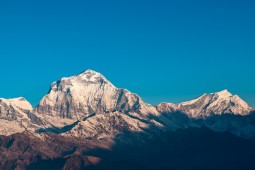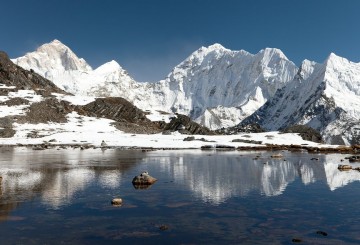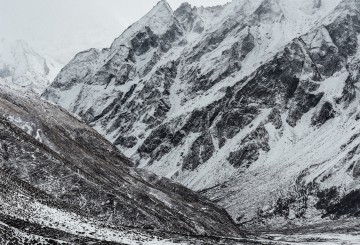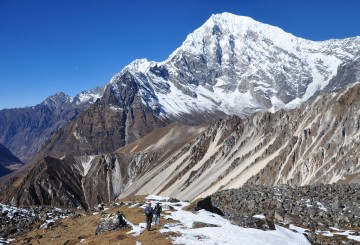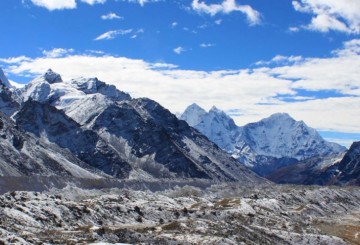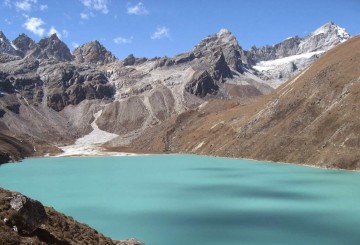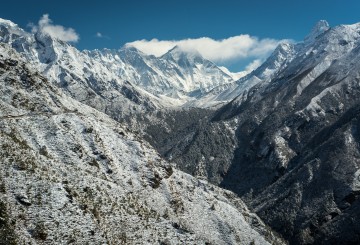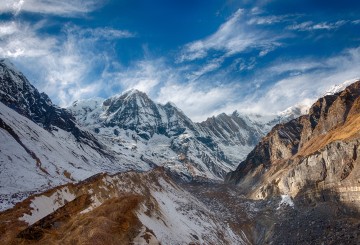Upon your arrival, our representative from Himalayan Sherpa Adventure awaits you at the airport. We will then proceed towards your hotel and brief you about Nepal and your trek. In the evening, we take you to a traditional Nepali restaurant for dinner where we will give you more information about the trek, your city sightseeing and also answer any questions you may have. Overnight in Hotel Mulberry. (B.D)
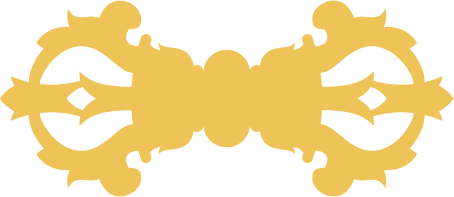
Annapurna region is remarkably special as you discover deep gorges and ice giants, high desert and blooming Rhododendron forests, Buddhism and Hinduism all existing here. Those who trek around the Annapurna can experience the Himalayas in their unique diversity: from the hilly country we switch to the high mountains, the path climbs to over 5,000 meters along the snow-covered peaks. Later in the trek, we visit Muktinath temple - a holy place and the mysticism of Asia, the place where Lord Shiva meets Lord Buddha. Then down - lush green rice fields, the sun rises over Poon Hill, Annapurna and Dhaulagiri before we bid farewell. Experience the world of mountain giants up close!
Best time to travel: You can travel to Kathmandu at any time of the year and any season. However, monsoon season– usually June to August– has approximately 80% of rainfall. Spring (March - May) and Fall (September - November) are the recommended seasons to travel due to its pleasant weather. Winter season (December - February) is also recommended if you would like to experience the best season for trekking and exploring the Himalayas.
-
Day 1- Arrival in Kathmandu
-
Day 2 - Sightseeing of Kathmandu Durbar Square, Pashupatinath and Swayambunath
Our guide will check your equipment in the morning to see if everything is fine. We will then start our sightseeing tour, heading to at least 3 major attractions in Kathmandu. Our sightseeing starts in the morning and should finish around 3 pm. Some major sites are Pashupatinath, Boudhanath, Swayambhunath and Kathmandu Durbar square. You will have the rest of the day free and also a chance to do any last minute shopping before your trek. Overnight in Hotel Mulberry. (B)
-
Day 3, Drive to Shenge via Besisahar 1311m 9 hrs drive
This day we drive from kathmandu to besisahar by private coaster or hiace/van to besisahar which takes about 6-7 hours starting @7am in the morning . After stopping in besisahar, we get our permit checked and start our journey by driving on a local jeep to Shenge.As the driving roads are on rough terrain ,the drive takes about 2 to 3 hours. We stay overnight at in Shenge. (B,D)
-
Day 4, Trek to Marshyangdi valley 5 walking hrs
The trek begins by walking up moderately through tropical vegetation and Rhododendrons. Steep uphill in the afternoon to the high plateau of the valley, picturesquely situated in the Marsyandi valley, today's destination. Lodge overnight at the Valley. (B,D)
-
Day 5, Trek to Chame 2650m 5 walking hrs
Today after breakfast, we head west to Chame while the 8,000 manaslu behind us stands tall. The Annapurna II(7397m) can be seen in the south. Chame is the headquarter of the Manang district . The village entrance of Chame fascinates us with large mani wall with prayerwheels .At the entrance to the village you pass a large mani wall adorned with prayer wheels . Lodge Overnight at Chame (B,D)
-
Day 6, Trek to Pisang 3250m 6 walking hrs
We start our day early after having our breakfast as we head for pisang . On the way to Pisang we get to admire the mighty peaks of the Annapurna range and also take a first look into the Manang valley settling below Annapurna and Gangapurna . Once in Pisang, we enjoy the sight of Pisang Peak (7937m) which lies opposite of Annapurna II . Lodge overnight at Pisang.
-
Day 7 Trek to Manang 3519m 6 walking hrs
As we get to know the mountains better , we move towards more beautiful destination that is Manang . We also visit the 500 year old monastery of Braga which is near to Manang . We continue to Manang via Humde. On the way we see the peaks of Annapurna II - IV, Chulu and Tilicho Peak. Lodge overnight at Manang . (B.D)
-
Day 8 Manang 3519m Acclimatization
Today we spend our day , exploring Manang area which has stood tall and unique because of its captivating beauty . Inhabitated by Tibetians , Thakalis and sherpas , it has the lowest population of all the districts . The people in this region mostly work in farming and cattle rearing . We will be hiking around the area to acclimatize well with gaining elevation . This will help us prepare for the days to come where we trek above 3500m . Lodge overnight at Manang .(B,D)
-
Day 9, Lader 4200m 5 walking hrs
We move forward to lader today after our breakfast . The view of the glaciers of the 7,000 meter Gangapurna accompanies us on the way to the village of Lader.The uphill trail takes us to Ghunsang through Tengi . On the way , we get to view Annapurna III , Gangapurna, Chulu west , Manaslu range etc. Lodge overnight at loader. (B,D)
-
Day 10, Thorong La High Camp 4925m 6 walking hrs
This is the day , we have been waiting for as it happens to be one of the most beautiful and toughest journey which continues for another day too . Our trek today almost continues to Thorong Phedi, then uphill again and we have reached Thorong La High Camp. Lodge overnight at Thorong La High Camp. (B,D)
-
Day 11, Thorong La 5416m 9 walking hrs
Today we pass the highest pass in the world Thorung La 5416m and is also one of our highlight of this trek .is today which . We follow the switchbacks until we reach the stone pyramid and the prayer flags that mark the Thorong Pass. We complete the pass steadily and descend carefully depending on the snow level . The climb is rewarded with magnificent views of the Himalayan scenery . Later we descend steeply down to Muktinath. Lodge overnight at Muktinath. (B,D)
-
Day 12 Jomsom 2743m 5 walking hrs
After two long days of the pass , we have an easy day to jomsom .Before descending to Jomsom we visit the sanctuary with the eternal fire in Muktinath . Muktinath is considered a sacred place for the people of Hindu and Buddhist religion . The landscape here is barren, almost desert-like as it is a dry valley .It is also considered as desert of Nepal . Lodge overnight at Jomsom. (B,D)
-
Day 13 Kali Gandaki Gorge 2520m 6 walking hrs
As we head towards today's destination Tatopani , we drive to the small town of Tatopani in the Kali Gandaki Gorge from Jomsom . The Kaligandaki gorge is the deepest gorge in the world .The upper part is also called Thak Khola is also taken as himalayan trade in ancient times . The drive also happens to be in very adventureous roads and amazing scenery . Upon reaching Tatopani , we can also enjoy the hot springs around and give ourselves proper rest . Lodge overnight at Tatopani. (B,D)
-
Day 14 : Ghorepani 2874m 6 walking hrs
Today we trek steeply uphill to Ghorepani through terraced rice fields and Rhododendron forests. Ghorepani is the nearest way to Pooonhill . The trail today is without any snowy weather and dry area which we have been going through couple of days . We pass by the rhododendron forests and green trail . Lodge overnight at Ghorepani. (B,D)
-
Day 15 : Tirkhedhunga 1480m 5 walking hrs
We rise early today before the sun rises and head towards poonhill which shows us the beautiful sunrise . We enjoy the sunrise in Poon Hill and look out over Dhaulagiri, Annapurna and Machapuchare and then we descend to Tirkhedhunga . Lodge overnight at Tirkhedhunga. (B,D)
-
Day 16 : Pohkara
This is the last day of our trekking which leads us to leads us to Birethanti. From here, we take the bus to Pokhara which is about 3 hours of ride by private coach . Upon reaching Pokhara, today we visit some sites near by lakeside. Hotel accommodation in Pokhara. (B)
-
Day 17 : Fly back to Kathmandu
Today we fly back to Kathmandu. As we reach Kathmandu in the afternoon, you have the rest of the day free. Overnight in Hotel Mulberry. (B)
-
Day 18 : Final Departure
We bid final farewell and drop you to the airport for final departure. (B)
What's Included ?
- All airport and hotel transfers
- 3 nights of hotel stay in Kathmandu on Bed & Breakfast basis
- Professionally trained and experienced tour guide and assistant guides
- Welcome/or Farewell Dinner
- Transportation in our private company vehicle
- Entrance permit and fees for all the Heritage sites
- All government and local taxes
What's Excluded ?
- Lunch and Dinner in Kathmandu
- Tips for guides and drivers
- Personal expenses
- Personal Insurance– travel and rescue insurance
- Airfare for international flights to and from Kathmandu
- Rescue services
- Nepalese visa fee
- Services not mentioned in the “Included” section
-
1. What is the best time to visit the Mustang region?
- Trekking in the Annapurna region is possible any time of the year. However, the most popular months for trekking are March, April, May and September, October, November, as these months are when the conditions are at their best. The spring and autumn tend to offer reasonable temperatures, clear skies, little to no rain and less chance of problematic snowfall. The average temperature around this time can range from a high around 25 degrees Celsius during the day to -15 degree Celsius at night. - December, January and February have colder temperatures and are less frequently travelled, but this should not deter you from making your trip to the Annapurna region during these months. The weather is very clear allowing you to see all the majestic mountains and most of the lodges and tea houses are open during this time. Best of all, you don’t have to deal with crowds and will have all the views to yourself!
-
2. How do you get to the Mustang region?
- The most popular and comfortable way to travel the Annapurna region is by a short 30 minutes flight from Kathmandu to Pokhara. From Pokhara, your team will drive to the starting point of the trek. - There is an alternative way to reach the Annapurna region by driving from Kathmandu 6 hours to Pokhara and then continue on to the starting point of the trek.
-
3. What is the luggage weight limit on flights to the Mustang region? Do we need to use duffle bags instead of regular luggage (with frame and roller)?
- The luggage weight limit on Annapurna flights are 15 kgs luggage and 5 kgs of hand carry (personal backpack). Before you start your trek, any unwanted luggages can be left in your hotel in Kathmandu. They will happily store it for you as you will be using the same hotel once your trek ends. - Yes, Duffle bags are better while in the trek because it can store more luggages and helps our porter to manage his load better.
-
4. Where will we be staying during our trek and what to expect from the accommodations? What kind of meals should I expect during the trek?
- We use only the best available accommodations during our treks which can include hotels, lodges and tea houses. Through our decades of experience, we have selected these places for their hygiene, amenities and client satisfaction. - During your trek the food choices might be more limited but you can always expect to find staples such as Dal Bhat, driving from Kathmandu 6 hours to Pokhara and then continue on to the starting point of the trek. 3. What is the luggage weight limit on flights to the Mustang region? Do we need to use duffle bags instead of regular luggage (with frame and roller)? - The luggage weight limit on Annapurna flights are 15 kgs luggage and 5 kgs of hand carry (personal backpack). Before you start your trek, any unwanted luggages can be left in your hotel in Kathmandu. They will happily store it for you as you will be using the same hotel once your trek ends. - Yes, Duffle bags are better while in the trek because it can store more luggages and helps our porter to manage his load better. 4. Where will we be staying during our trek and what to expect from the accommodations? What kind of meals should I expect during the trek? - We use only the best available accommodations during our treks which can include hotels, lodges and tea houses. Through our decades of experience, we have selected these places for their hygiene, amenities and client satisfaction. - During your trek the food choices might be more limited but you can always expect to find staples such as Dal Bhat, Noodles/ Chowmein, Fried rice, Sandwiches, Soups and French Fries. You can also find some vegetarian options as well. Another common popular Nepali dish is Momo (dumpling) which is very popular among the locals. Make sure to try one when you can.
-
5. Do we need to bring towel, toilet paper? Do all the hotels/ lodges on the route provide bathroom, hot shower and toiletries?
- Not all hotels/ lodges provide the items mentioned above. We recommend all our clients to bring their own toiletries, towel and toilet paper. Some lodges will provide attached bathroom with hot shower in your room while others will just provide a common bathroom. - The Annapurna region is still a remote mountain area that is mostly inaccessible by road. Hence, most of the goods and supplies in this region have to be carried by porters or mules. This makes it very difficult and expensive to provide all the facilities and please keep in mind that the higher you trek, the lesser facilities will be available.
-
6. Do we need to bring a sleeping bag and how warm will the room be?
- If you are traveling Manang region in autumn then you will most likely not need a sleeping bag but if you are visiting in winter around December and January then you will definitely want a sleeping bag with you. You will only need a sleeping bag in the higher elevation. Some lodges will give extra blankets but having your own sleeping bag is better. Your porter will put your sleeping bags in the duffle bags that he carries. If you don’t have a sleeping bag, you can always buy one in Kathmandu or rent through our company.
-
7. If we bring water bottle, where can we refill clean drinkable water?
- There used to be clean drinking water stations along the Manang a route but it seems that it has not been in operation for few years. We recommend to purchase a bottle mineral water and then to pour it onto your water bottle. Purchasing mineral water is very easy in the region but please know that the higher you go, so will the price of water. Also, please remember to recycle the plastic bottle or to give it to your guide or the lodge who will recycle it. It is not advisable to drink tap water. Please only use mineral bottle water or boiling water.
-
8. What about Laundry services and ATM’s along the trek route? Do they accept US dollar during the trek?
- Laundry machines are very rare in the mountains so please check with your guide for this service. Trekkers usually will not have big laundry during the trek and the little items such as socks and towels can be hand washed and later dried in the sun or by the fire. Most trekkers will only do their laundry once they are back in the capital Kathmandu where you can find plenty of Laundry services. - ATM’s are also available but only in certain places. So we urge you to use the ATM’s in Kathmandu where there are plenty and also their service fee will be comparatively less than in the mountains. - Yes they accept US dollar in the mountains but you will get a better deal if you exchange it in Kathmandu in the money exchange shops.
-
9. Is Internet/ Phone available up in the mountains? How do I charge my electronics?
- Internet is available but you will need to purchase it from the lodges. If you have bought a Nepali sim card then depending on the subscription, you can also get mobile data services but this is not a guarantee in all areas of the mountain. If your trek is above 4,000 meters high, we will send a company satellite phone along with the guide just in case of an emergency. - We recommend that our clients bring a power bank with them as electricity is limited especially at higher altitudes. We also found out through some of our clients that the solar powered power bank works well during the trek. So we recommend having both or at least a power bank. Some lodges will provide free electricity for you to charge your power bank and in higher altitudes you may have to pay to charge your electronics. - Tip: Batteries will lose their charge fast in colder temperatures. So we recommend tucking your electronics in your blanket/ sleeping bag or you might find your phone/ camera dead in the morning.
-
10. How common is Altitude Sickness? What to do if I get one?
- While trekking in the Himalayas, there is always a chance of dealing with Altitude sickness, but there are many things that you can do to minimize the risks. Our itinerary programs are carefully designed to ascend slowly and to provide proper acclimatization activities. Our experienced guides will remind you to stay hydrated and also look out for any early signs of distress. - Our guides receive training every year on Altitude sickness. If they think that you are showing symptoms of Altitude sickness, they might perform some simple diagnostic tests such as checking your oxygen level or asking you to walk in a straight line. The most effective treatment for altitude sickness is to descend to a lower elevation. However, in severe cases or certain conditions where descending is not possible our guides will coordinate an air evacuation as soon as possible. - Note: All of our guides are trained to administer oxygen. Every trek that goes above 4,000 meters will be equipped with an oxygen cylinder and a satellite phone incases of an emergency.
-
11. Do we need to carry travel insurance?
- Yes, travel insurance is mandatory while trekking with us. Please ensure that your insurance covers air evacuation service. While trekking to the Himalayas, there is a risk of dealing with an altitude sickness. In case of such emergencies, your air evacuation insurance will help you cover the cost or else the trekker will have to solely bear the costs. Our treks are organized in a very thoughtful manner so you will not have to face such adversities, but we always want our guests to travel in a peace of mind.
-
12. Do I need guide and porters for my trek?
- Yes, having a trekking guide and porter is necessary part of your journey. We have our team of guides and porters who work with us every season. Guides and Porters are an integral part of what we do so they are a vital team member. All of our guides are trained every year on leadership skills and basic first aid skills. Our porters are treated fair by limiting the weight they carry and paying well for the job they do. Trekking in high altitude requires good support team and it is very important to have trekking guide and porter along with you. We treat our porters fairly by only allowing 24 kgs of maximum load and limit per trekker a maximum of 12 kgs (26 lbs) to be carried. 1 porter can carry the load of 2 clients.
-
13. Do I have to tip my guide/ porter?
- Tipping culture is not mandatory but highly appreciated. Please keep in mind that our guides/porters will not ask you for anything– including tips. However, if you think that they have performed well while doing their job, and earn your appreciation or a "thank you", you may by all means tip them any amount you find reasonable. Typical guidelines on tipping the guides are $5 - $10 per day and for porters $3 - $5 per day. Most clients often leave tips in the last night of their trek.

-
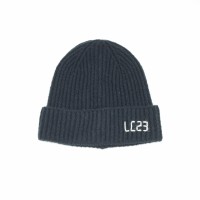
hats/beanie
-

Sunglasses
-
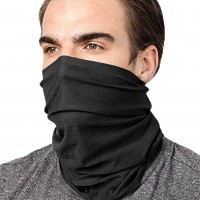
Scarf/Buff.
-

Candies/sweets
-
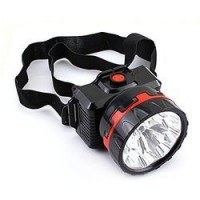
Headlights.
-
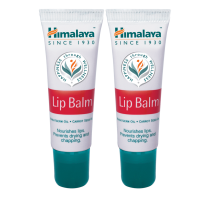
Lip balm
-

Sunscreen
-
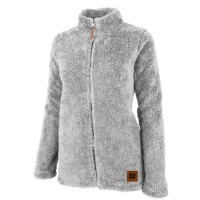
A warm fleece
-
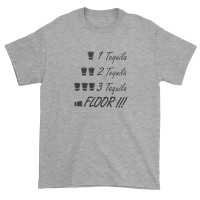
fewT shirts/ long and short sleeve shirts.
-
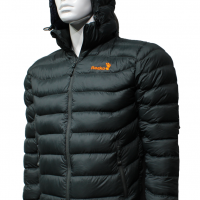
Daun Jacket
-
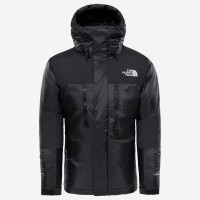
Windstopper jacket
-
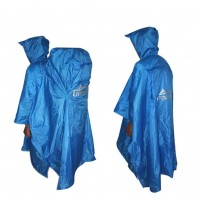
ponchos/Raincoat
-
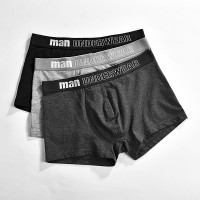
A few pieces innerwear.
-
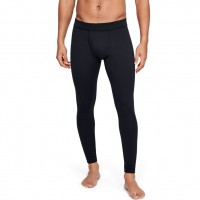
few pairs ski underwear
-
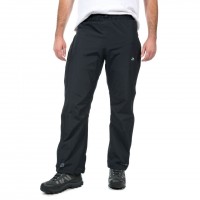
windproof trouser
-
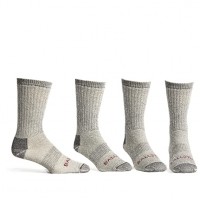
pairs of Trekking Socks
-

pairs woolen socks.
-

Slipper & Sandals
-
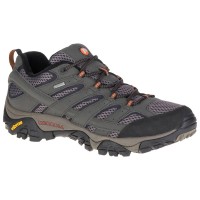
trekking shoes
-
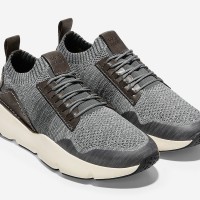
one comfortable shoes
-
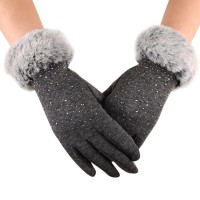
thin gloves & think gloves
-
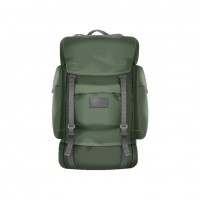
backpack / Rucksack (waterproof)
-

Sleeping bag -10* C
-
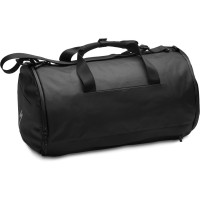
Duffel bag
-
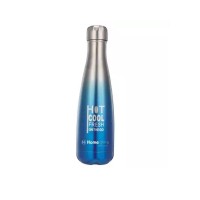
Water bottle
-
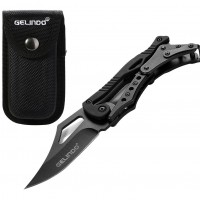
Pocket knife
-
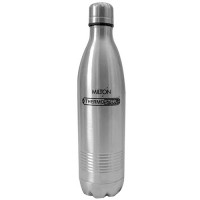
thermos
-
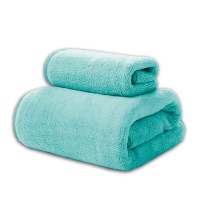
Towel & hand towel
-
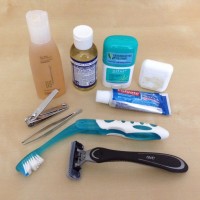
Toiletries
-

Trekking poles

You May Also Like


